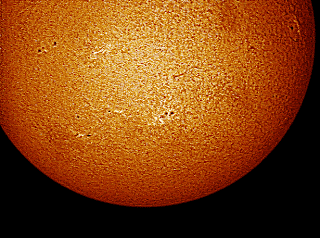Saturn April 21, 2011. Weather was not good - it was windy and partially cloudy. To suppress vibration I used Celestron Vibration Suppression Pads. To made better focus - used Bahtinov focus mask.
 |
| Saturn, Celestron NexStar 4SE, NexImage, Vibration Suppression Pads, Bahtinov mask, Astrophotography |
Video duration 4 min 00 sec (240sec), Frame Rate 10 frames/second, 2400 frames.
Registax v6 - Align 3x3 area, 10 align points, Drizzling Optimization, Wavelet - Gaussian Initial Layer 3 Used Linked Wavelets with 1 and 2 layers, RGB shift
Photoshop - Crop, Luminosity Layer, Saturation, Contrast, Unsharp Mask, save for Web device jpg
 |
| Saturn, Celestron NexStar 4SE, NexImage, Astrophotography |
Video duration 4 min 30 sec (270sec), Frame Rate 10 frames/second, 2700 frames.
Registax v6 - Align 3x3 area, 11 align points, Drizzling Optimization, Wavelet - Gaussian Initial Layer 3 Used Linked Wavelets with 1 and 2 layers, RGB shift
Photoshop - Crop, Curves, Contrast, Unsharp Mask, Despeckle, save for Web device jpg
 |
| Bahtinov mask, Celestron 4SE, Brooklyn Astrophotography |
 |
| Celestron Vibration Suppression Pads |


















































